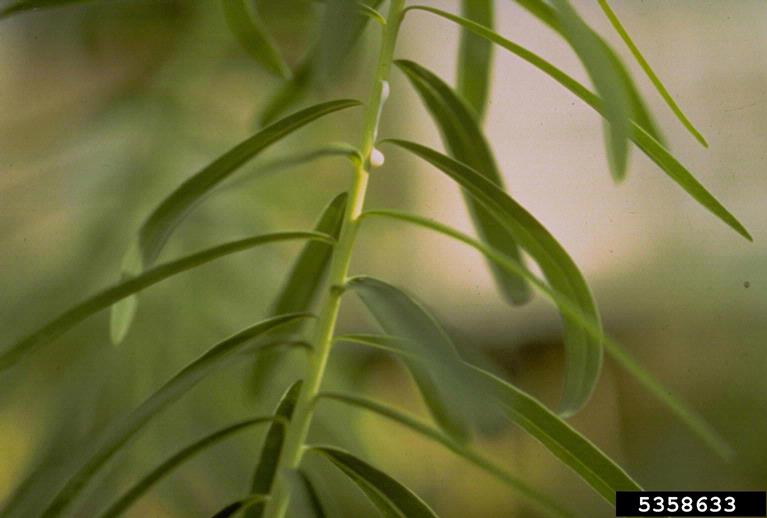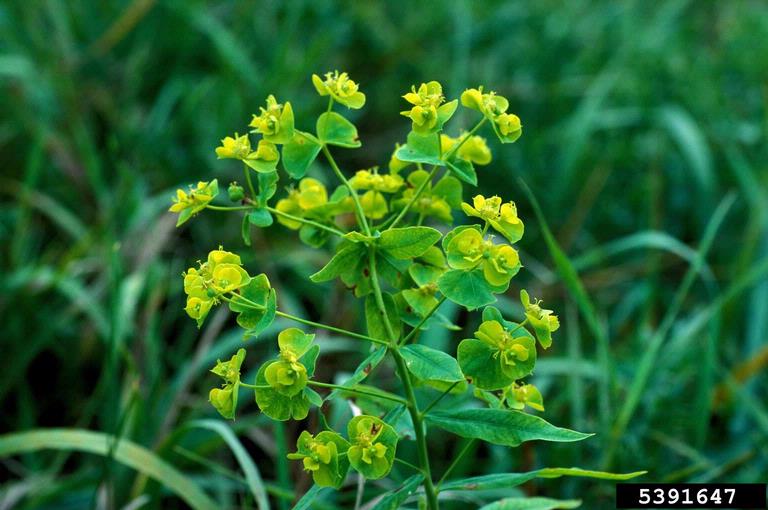Leafy Spurge

Leafy Spurge
(Euphorbia esula)
Priority: - Prevent / EDRR
Tags: Agricultural | Toxic | EDRR | Biocontrol
Identification and Reproduction
Identification:
- Leafy spurge is a herbaceous perennial that grows up to 1 m tall.
- Stems are smooth, bluish-green and if broken they will exude a milky substance.
- The leaves are lance shaped, smooth, up to 10 cm long and arranged alternately along the stem.
- Flowers are found in clusters and are composed of two heart shaped yellow to green bracts. This plant blooms in June.
Reproduction:
- This plant reproduces by seeds which have a germination rate.
- Seeds can remain viable in the soil for at least 8 years.
- Seeds explode from the seed capsules and this can send the seeds up to 5 m from the parent plant.
- It also reproduces vegetatively and has an extensive root system.
Habitat & Ecology
- It is well adapted to various soil properties and climates.
- It is most vigorous in semi-arid conditions and coarser textured soils.
- Commonly found along dry roadsides, fields, waste sites and distrubed soils.
Impacts
Social:
- Its milky substance from the stems and flowers causes skin irritation in both livestock and humans.
- Degrades grazing and rangelands quality.
- Reduces likestock forage availability.
- Can also impact the aesthetic levels of landscape, having an impact on tourist value.
Ecological:
- This plant will out-shade and uptake available water and nutrients.
- Degrades wildlife habitat.
- It also has allelopathic properties that suppresses native plant growth.
Management
Mechanical/Manual Control:
- Small infestations they can be hand-pulled, but ensure entire roots are removed.
- Make sure to wear gloves and long sleeves to minimize skin exposure.
- Mowing in combination with chemical applications have seen success.
Chemical Control:
- Currently 2,4-D, glyphosate and picloram are registered chemicals for use on leafy spurge.
- Herbicide can be applied to small patches and may require repeat applications.
- It is crucial to apply herbicides when plants are actively growing and in seed production; mid to late June.
- Please carefully read all product labels prior to application.
Biological Control:
- The use of flea beetles (Aphthona nigriscutis and+ Aphthona cyparrissae) has showed success in controlling leafy spurge growth.
- These adult beetles will feed on the leaves and their larvae will mine into the plant roots.
Resources
Download A Guide to Weeds in British Columbia for Leafy Spurge here.
Header photo (HermannSchachner).




